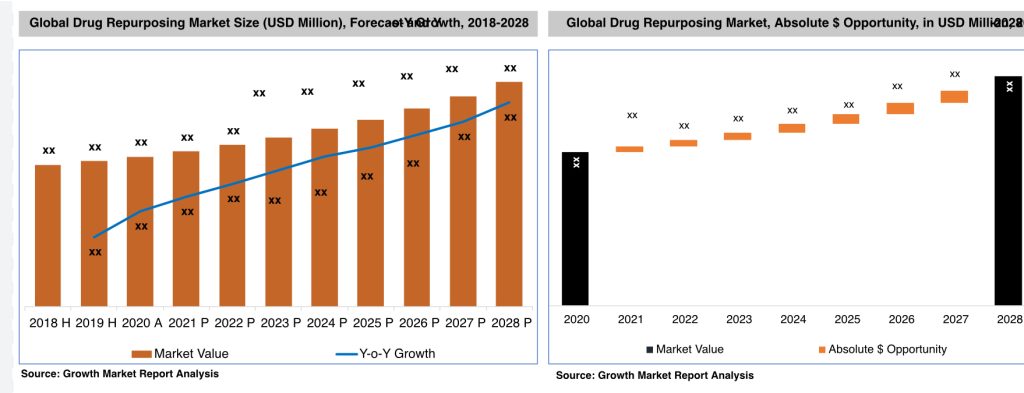The definition of drug repurposing
Drug repurposing refers to the research approach of reusing previously approved drugs to treat different diseases.
Examples of drug repurposing
Drug Repurposing Case #1: Disulfiram
In 1971, a 38-year-old cancer patient became addicted to alcohol. The patient had widespread metastases and gave up on treatment. To at least address the alcohol addiction, the patient took Disulfiram for 10 years. However, it didn’t treat the alcohol addiction. One day, heavily intoxicated, the patient passed away. Upon autopsy, it was discovered that the pre-existing tumors had disappeared. This discovery suggested a potential anticancer effect of Disulfiram, a drug that wasn’t very effective for alcohol addiction. Clinical trials were conducted based on this finding, and the survival rate for cancer patients taking Disulfiram was found to be 76%.”
Drug Repurposing Case #2: Viagra
Originally, Viagra was developed as a treatment for angina. Research has emerged suggesting that when administered alongside a flu vaccine, it can reduce cancer cell metastasis.
Drug Repurposing Case #3: Minoxidil
Minoxidil was originally tested as a medication to expand blood vessels and treat high blood pressure. While expanding blood vessels can reduce blood pressure, it also facilitates improved blood flow to hair follicles, which can promote hair growth. Consequently, it has been applied as a treatment for hair loss.
Drug Repurposing Case #4: Remdesivir
Remdesivir was initially developed by the U.S. pharmaceutical company Gilead Sciences as a treatment for the Ebola virus. However, it failed in Phase 3 clinical trials. Amidst the lack of treatments for COVID-19, animal studies confirmed that Remdesivir can inhibit the proliferation of the virus, leading to its rise in attention as a potential treatment for COVID-19.”
Effects of Drug Repurposing
The reason pharmaceutical and biotech companies invest in drug repurposing is clear. Economically, enhancing the value of an existing drug is more efficient than creating a new one. The benefits of drug repurposing include:
1. Saving time and costs
2. Established safety profiles
3. Quick patient assistance#1 Saving Time and Costs
Through drug repurposing, both time and money can be saved. Developing a new drug requires a significant amount of time and money. By using an already approved drug for a different purpose, companies can skip the initial stages of clinical trials and directly focus on verifying its effectiveness.
This means they can bypass Phase 1 trials and proceed directly to Phase 2 or 3 trials, simplifying the clinical testing process. Being able to expedite clinical trials signifies a massive reduction in drug development costs and duration.
The approval probability for drug repurposing is also higher than for new drugs. Even if a new drug passes Phase 2, the likelihood of it getting final approval after Phase 3 is around 10%. In contrast, the approval rate for drugs that have undergone repurposing rises to about 25%.
#2 Established Safety Profile
Existing drugs have already undergone safety tests in humans, so concerns about side effects or safety are relatively reduced.
#3 Quick Patient Assistance
Especially in urgent situations or when treating rare diseases, repurposing can be a method to provide rapid assistance to patients.
‘Drug Repurposing’ and AI
In the past, drug repurposing was largely based on experience, but its efficiency has been enhanced by integrating with AI, which has been a key factor in revitalizing drug repurposing.
There might come a time in pharmaceutical research when AI surpasses human capabilities. The American venture company, Insilico Medicine, announced research results that they managed to shorten the drug discovery process, which usually takes 2-3 years, down to just 21 days.
Using AI programs, new drugs that did not exist before are being developed from past research. After learning from a “library” of data on compounds previously researched, AI first identifies over 30,000 candidates and then pinpoints 6 compounds with a high potential to become drugs. These 6 compounds were then actually synthesized.
Thus, the advancement of AI technology shows a positive impact on new drug development. Companies that utilize AI for drug repurposing may have a higher likelihood of success compared to those that fully develop new drugs.
Future Prospects of ‘Drug Repurposing’

Drug repurposing is expected to continue its market expansion. It was valued at $31.3 billion in 2020 and is projected to reach $46.8 billion by 2028.
Companies involved in this field include Standigm (South Korea), Biovista, and Healx, among others. Notably, Atomwise (USA) used AI to analyze the structure of drugs used for other diseases and identified a candidate substance for Ebola virus treatment in just one day. Moreover, BenevolentAI (UK) is conducting clinical trials for insomnia using a drug that was originally being developed for ADHD but was discontinued.
Both economically and efficiently, drug repurposing has shown promising results. The outlook for drug repurposing, which is set for future market expansion, can be considered positive.
Recommended on the website
The Power of Reading 1% (Mer)

One thought on “The concept and future prospects of ‘drug repurposing’.”